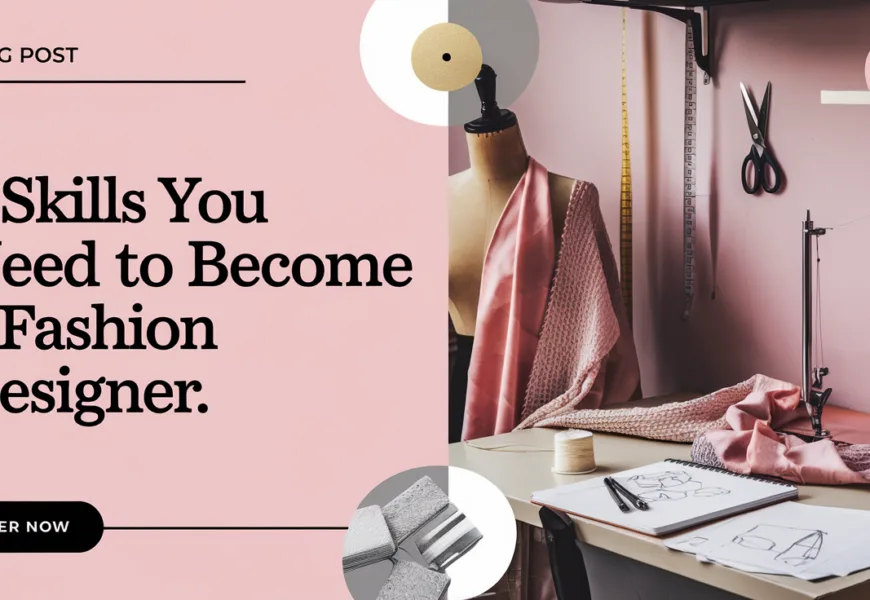Have you ever wondered what it takes to make it as a fashion designer? The world of fashion design is dazzlingly creative and tremendously rewarding but also competitive and demanding. So, what are the essential skills one needs to thrive in this industry? Let’s discuss the five key skills that are vital for anyone aspiring to become a successful fashion designer.
Understanding Textures, Colors, and Fabrics
Imagine walking through a fabric store and being able to identify the perfect material for your next creation merely by feel or sight. As a fashion designer, mastering the “language” of materials is crucial. It’s not just about recognizing silk from cotton, but it’s also about knowing how each fabric will behave in a garment.
Deep Fabric Knowledge
To succeed in fashion design, you should develop an intimate knowledge of various textiles. Each fabric has its unique properties, like weight, drape, stretch, and durability, and understanding these can make or break your design. For instance, the choice between using chiffon or denim can vastly change the design’s functionality, look, and feel.
Mastering Color Theory
Color isn’t merely a visual element; it’s a language that expresses the mood and theme of your collection. A keen eye for color enables you to create harmonies and contrasts that resonate with your design intent. Being adept at choosing the right hues that complement skin tones and suit the intended aesthetic is a valuable skill.
Visualization Talent
Every great design begins as a spark in the mind’s eye. Visualization is an indispensable skill for a fashion designer, enabling you to conceptualize ideas and bring them to life.
Imagination and Creativity
Designers often start with a sketch, but imagination is the true foundation. Whether dreaming up a new runway piece or a casual line, the ability to visualize how a garment fits into a broader collection, or even the marketplace, is key.
Translating Vision to Reality
Once you have a mental picture of your design, translating that into a tangibly wearable piece is the next step. This involves planning the construction of garments, selecting appropriate materials, and predicting how the garment will move and fit on a person.
High Self-Esteem
The fashion industry is notoriously cutthroat, demanding confidence from those who navigate its currents. High self-esteem can serve as your anchor in the challenging waters of fashion.
Handling Criticism
As a designer, receiving criticism is part of the job. Whether from clients, peers, or the public, feedback can be constructive or harsh. However, maintaining confidence in your designs despite critiques helps you remain steadfast and focused on your vision.
Standing by Your Creations
Your creations are your voice, and believing in them is necessary. Confidence enables you to present and defend your ideas passionately, garnering respect and attention from others in the industry.
Strong Business Acumen
Fashion design is as much about business savvy as it is about artistic ability. After all, your designs must sell to sustain your career.
Entrepreneurial Spirit
Approaching fashion design like a business ensures that you consider factors like production costs, target demographics, and market trends. Understanding the financial aspects, like budgeting and pricing strategies, is essential for sustaining your design ventures.
Marketing and Networking
In today’s digital age, marketing also involves creating a robust online presence. Building your brand through social media and other platforms helps attract and interact with clientele. Networking with fellow designers, suppliers, and fashion connoisseurs can open opportunities for collaboration and growth.
Unwavering Drive and Ambition
Ambition fuels creativity and perseverance, essential traits when facing the industry’s inevitable rejections and challenges.
Overcoming Setbacks
Fashion is a field where rejection is common, and only those with a steadfast drive continue pushing forward. Many renowned designers faced multiple refusals before tasting success. Your ambition should propel you through setbacks, providing the resilience needed to achieve your dreams.
Continual Growth
Committing to lifelong learning and improvement keeps your designs fresh and relevant. Attending workshops, researching fashion trends, and constantly honing your skills are practices that sustain your career’s momentum.
The Artistic Skill of Sewing
While not always mandatory, knowing how to sew enhances your understanding and capability as a designer.
The Basics of Construction
Understanding the nuances of garment construction can inform your design processes and decisions. It enables you to understand how seams, darts, and hems contribute to a garment’s overall shape and fit.
Hands-on Experimentation
Having sewing skills allows for hands-on experimentation with fabric, aiding in prototyping and tailoring garments to perfection, ultimately refining your designs.
Conclusion
Becoming a sought-after fashion designer involves a blend of creative vision and practical skills. Mastering textures, colors, fabrics, visualization, marketing, and handling business aspects, alongside cultivating unwavering ambition and confidence, are all essential to your journey. Whether your interest lies in haute couture or ready-to-wear collections, these skills will help pave your path to success in the ever-evolving landscape of fashion design.



